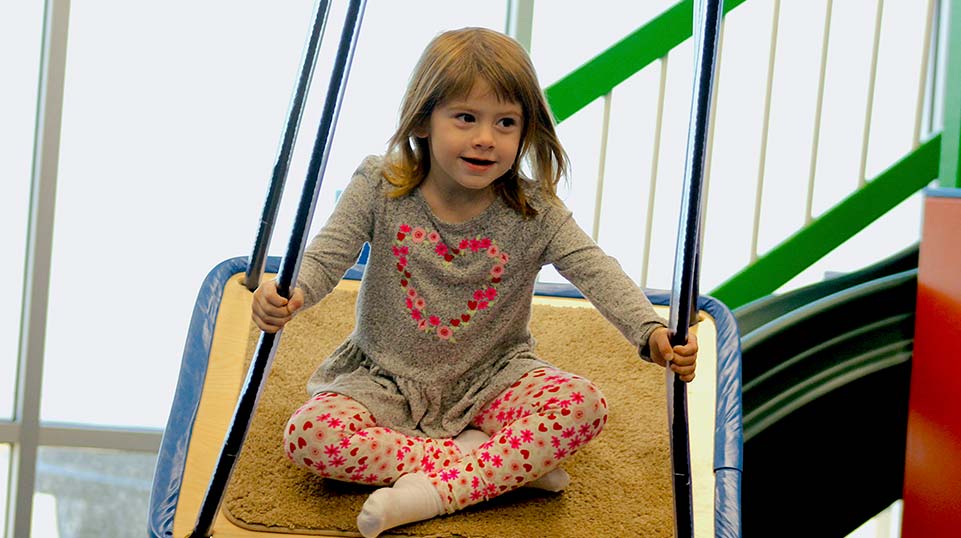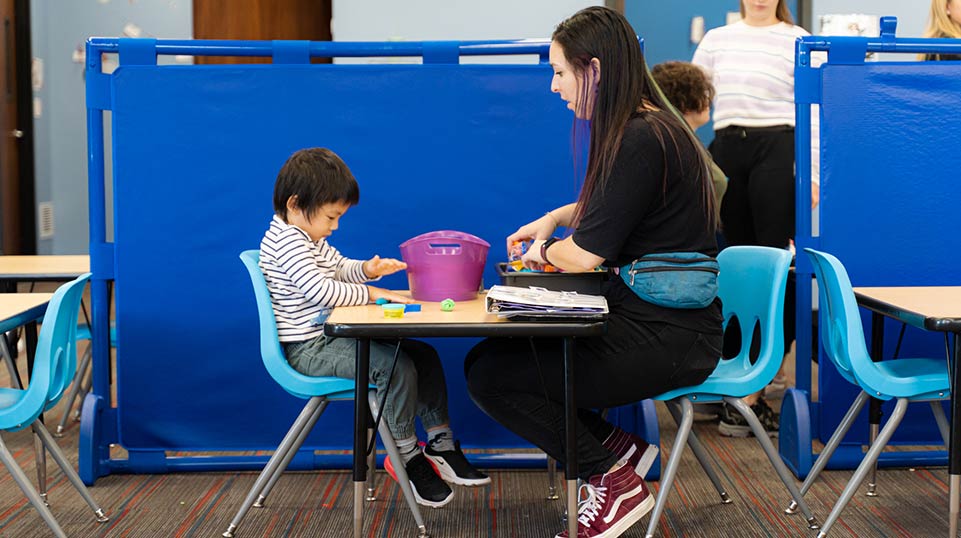ABA Therapy focuses on a variety of different challenging behaviors a child with autism may present. ABA Therapy is an option for children with autism to address these behaviors that may have a negative effect on their day-to-day life.
Westside Children’s Therapy’s ABA Therapy program will assess, understand and target improving different behaviors that interfere with a child’s ability to learn, play with peers, socialize in their community, and more.
Some common behaviors seen at Westside Children’s Therapy that ABA Therapy helps with are tantrum behaviors (big, emotional responding behaviors), elopement (running away/avoiding), refusal, property destruction/physical aggression, and more.
No matter the behavior, ABA Therapy is not about getting rid of the behavior, but rather teaching the child a way to replace it with a more appropriate behavior or response. ABA will work on increasing behaviors like functional communication and learner readiness skills, as well as decreasing behaviors like tantrums and physical aggression. These skills are taught by utilizing the child’s preferred activities and following the child’s motivation during those learning trials.
This is made possible by constant data collection by Westside Children’s Therapy RBTs and BCBAs. The BCBAs are the therapists designing the appropriate treatment program that is individualized for every child. RBTs implement the program and work most closely with the child.
Children with autism typically will engage in these behaviors due to previous learning history or because they do not have the skills to get certain needs or wants met.
ABA therapy focuses on 4 functions of behavior:
- Access: To get access to tangible things they want (a toy, food, etc.). Children in ABA Therapy will learn skills to get those things. Instead of crying, yelling, or taking a toy away from another child, Westside Children’s Therapy ABA Therapists will teach children the appropriate behaviors to get that need met (pointing at the item, verbally requesting or asking, and when applicable using an AAC System). The first set of behaviors are examples of tantrum behaviors a child may use to get needs met. Those are what ABA Therapy can help replace.
It can be difficult for parents because when the child engages in those behaviors, it becomes challenging to know what their child is asking for.

ABA Therapy will also address the child’s toleration skills of being told “no.” It is common for children with autism to have difficulty tolerating and accepting “no,” as well as having difficulty with other skills like waiting and transitioning.
Having the skill set to be flexible and tolerate that they may not always get what they want can help them be more successful out in the community and in a classroom setting.
- Escape: If something doesn’t feel good, they will want to get away or avoid doing something. In ABA Therapy, we will provide the child with tolerance skills to complete activities or tasks that might be difficult for them, and learn to communicate when they need help or need a break.
Instead of ripping up a worksheet or running away from a puzzle, therapists teach the child to ask for help or take a minute to calm down and re-approach.
If an activity is difficult for a child, we will teach them a more appropriate response than engaging in challenging behaviors.
- Attention: This is how a child gets the attention they are seeking. This can be positive or negative attention. A child may not know how to properly get the attention they want.
This is another example – as mentioned before – of a potential tantrum behavior. The child may settle for any sort of attention, but it is important that the tantrum behavior is not rewarded, where a child then knows that they can get what they want by screaming, crying, hitting, etc. ABA Therapy can help teach a child that those behaviors will not get them the attention they seek. So, we teach them ways to replace those behaviors with more positive ones.
We want the child to have the skills to tap on their friend’s shoulder, raise their hand or verbally communicate to another child/adult to get their attention.
- Sensory stimulation/needs: This is when a child engages in a behavior because it feels good and maybe replacing a feeling of discomfort. It depends on each individual child’s needs for what the behavior looks like. (Ex: hand flapping, jumping, tapping feet, etc.)

This is not something we look to decrease because this is something that makes the child feel good. And we want them to feel good! Similar to the above examples, ABA Therapy will help a child to know when and when it’s not appropriate to engage in those behaviors.
A time when a child will be encouraged to not engage in that behavior is if it is interfering with their ability to learn. When we are away from a learning table table, a child may engage in those sensory stimulation behaviors.
Westside Children’s Therapy – ABA offers 3 different school readiness programs:
IGNITE – A program designed for children ages 2-6
RISE – For children ages 5-8
FOCUS – An afterschool program for older-aged children.
Note: A formal diagnosis of autism is needed to receive ABA services.
If you are interested in starting ABA Therapy at Westside Children’s Therapy, click the “Get Started” tab below or call (815) 469-1500.







